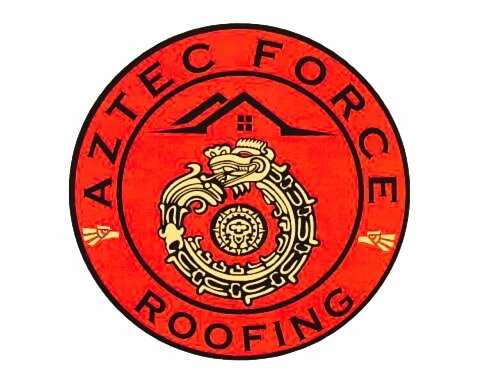A roof does more than sit on top of your home, it protects your family, strengthens your structure, boosts energy efficiency, and raises property value. But installing a roof isn’t a quick job. It’s a carefully planned, systematic process that only experienced roofing professionals can execute properly.
Whether you’re building a new home or preparing for a roof replacement, understanding the roof installation process helps you make informed decisions, avoid unnecessary mistakes, and ensure long-term durability.
In this expert-backed guide, we explain each step of a professional roof installation, what happens during the project, and what homeowners should expect from reliable contractors like Aztec Force Roofing, LLC.
Why Understanding Roof Installation Matters
Most roofing failures happen not because of bad materials, but because of poor installation. When homeowners understand the process, they can:
- choose the right roofing contractor
- avoid hidden costs
- spot early signs of improper installation
- ensure their roof lasts 20–50 years depending on material
This guide walks you through the complete professional flow, from first consultation to final inspection.
Step-by-Step Roof Installation Process
1. Initial Consultation & Roof Assessment
The first thing that a roofer will do is to get a clear idea of what you want. This includes the design you prefer, the material you’re considering, and even the color you’re interested in. After this, they’ll get an idea of your structure’s current condition, before finally proposing a quote and their expert opinion. This process can take anywhere from a few days to a few weeks.
2. Permit Preparation & Approval
Once all the details are finalized, the project needs to be approved by local authorities. The roofer will send off the plans to get the green signal for building regulations and safety codes, and depending on how long that takes, the project will begin afterward.
3. Safety Setup Before Installation
Finally, it’s the day of construction. Before doing anything, your roofers will set up extendible ladders, wear helmets, put on safety gloves, goggles, harnesses, and even non-slip boots to ensure safety as they work at such a height.
4. Removal of the Old Roof
For reliable roof replacements, the first major step is tearing off the old roof:
- removing shingles, tiles, or metal panels
- disposing materials in containers
- cleaning the decking for inspection
Proper tear-off prevents leftover moisture pockets and improves longevity of the new roofing system.
5. Decking Inspection & Structural Repairs
The decking forms the backbone of your roofing system. Professionals examine:
- moisture damage
- rotting wood
- cracks, sagging, or weak spots
Any damaged section is repaired or replaced to ensure the new roof sits on a solid, dry foundation.
6. Installation of Drip Edge
The first thing that the roofers will do once they’re ready for roof installation to begin is to set up the drip edge. They’ll attach a metal strip at the end of the roof, ensuring that any rainwater or melting snow doesn’t damage the fascia underneath.
7. Flashing Installation at Vulnerable Areas
Next step, they’ll install the flashing at all the junctions. This will ensure there are no chances of leaks around chimneys, valleys, and skylights. This creates a metal seal that doesn’t allow water to linger and penetrate the roof decking underneath.
8. Applying the Underlayment
Then they’ll roll out the underlayment on top. Carefully overlapping each layer ensures that an impenetrable barrier is created against moisture damage that could rot or soften the decking underneath.
9. Installing the Main Roofing Material
Almost there! Now that the base is set, the roofers will install the main roofing material. Installation will look different depending on the material you chose, with shingles being installed piece by piece and metal panels being laid down one after the other. Each roofing material is nailed into place using roofing nails so that it’s secured to the underlayment.
10. Adding Ventilation Components
Once the main roof is set into place, it’s time to add the finishing touches. Vents will be set up to ensure that the roof stays safe from moisture damage and mold growth, and flashing will be installed around the vents to protect them, too.
11. Final Roof Inspection & Cleanup
Once the clean-up is done, they’ll do a final sweep, securing flashing and hammering in any loose nails before deeming the roof installation process complete.
Common Roof Installation Mistakes to Avoid
These errors often lead to early roof failure:
- skipping flashing or incorrect placement
- improper underlayment overlap
- not repairing damaged decking
- poor ventilation setup
- incorrect nailing patterns
- ignoring moisture signs during tear-off
Hiring experienced roofing contractors prevents all of these issues.
Conclusion
A roof installation is a structured, multi-phase project that requires expertise, planning, and attention to detail. From the first consultation to final inspection, every step plays a role in ensuring your home remains safe, protected, and energy-efficient for years.
If you want a durable, professionally installed roof, trusted experts like Aztec Force Roofing, LLC ensure a seamless, high-quality installation from start to finish.
FAQs
- How long does roof installation take?
Depending on the project complexity, it can take anywhere from 2 to 7 days. - What is the most durable roofing material?
Slate is considered to be the most durable material by far. - What should I consider when planning a roof installation?
Take into account local weather, your budget, and future goals when planning a roof installation. - Are roofing mistakes covered by warranty?
Most roofing warranties cover product defects, not installation errors. This is why choosing a certified and experienced roofing contractor is essential. - What season is best for roof installation?
Late spring to early fall is usually ideal, as dry, warm weather allows roofing materials to adhere properly without delays.
